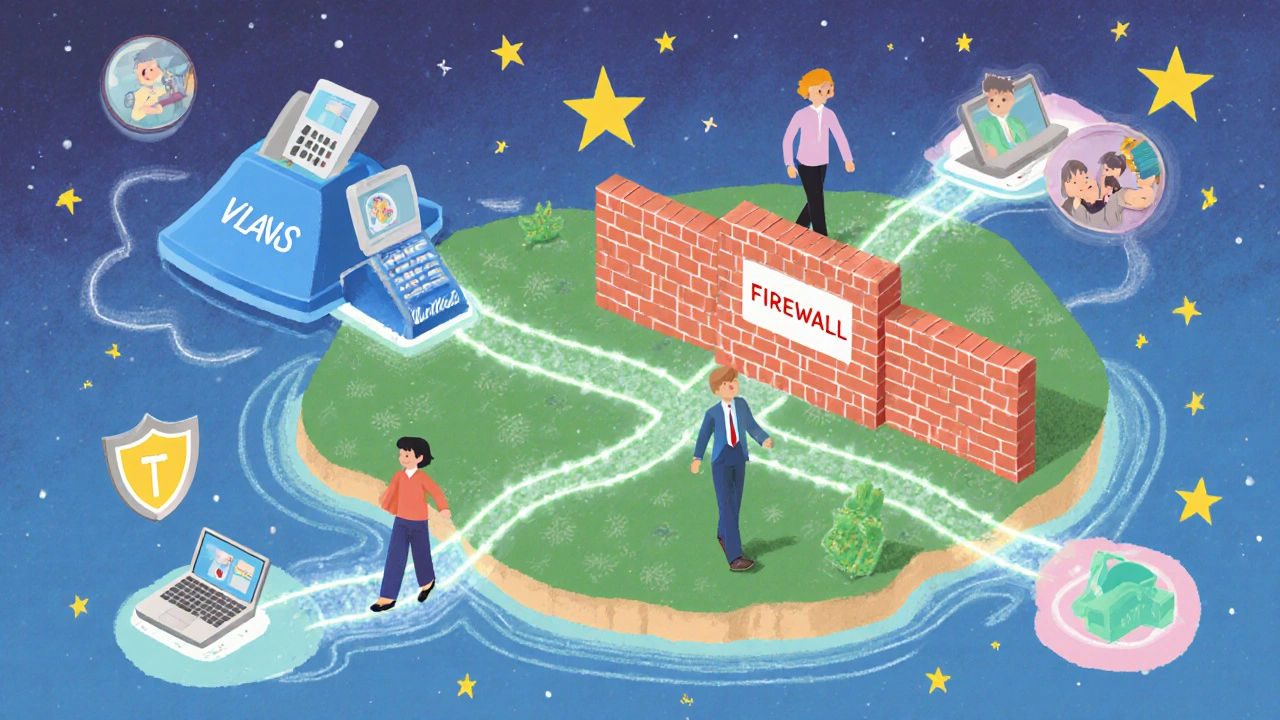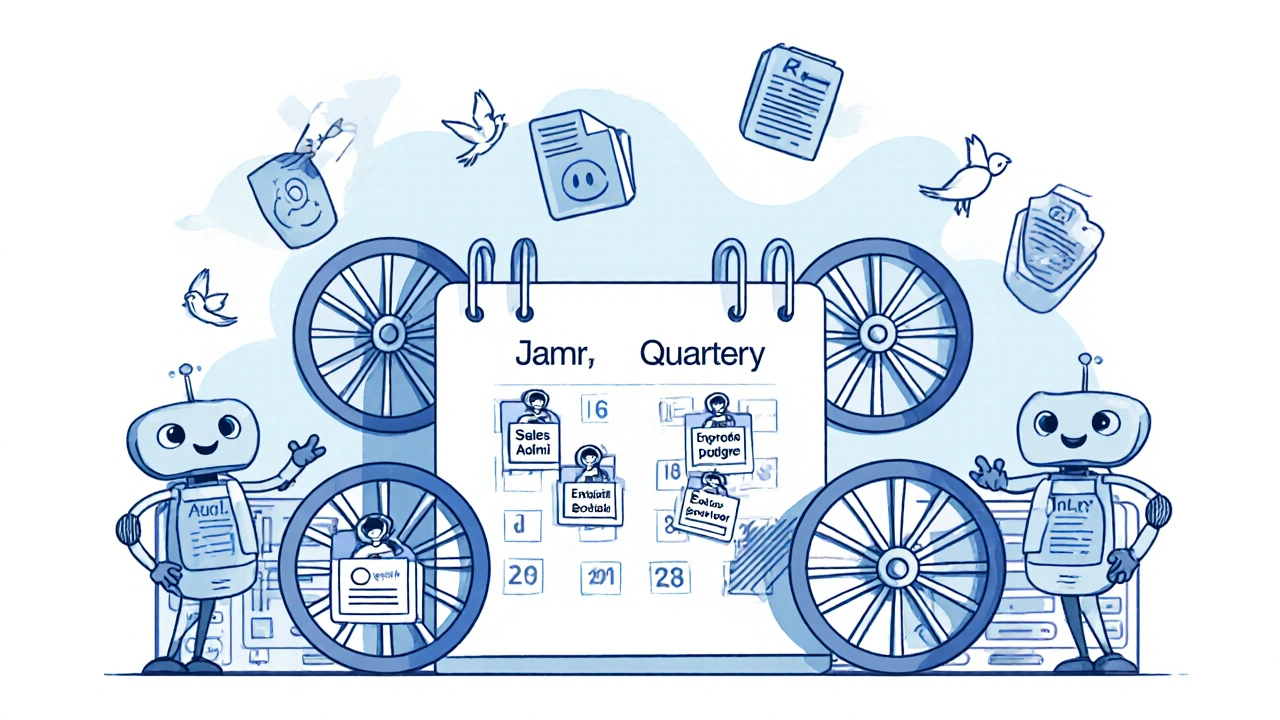Every year, companies lose millions to toll fraud, unauthorized call routing, and insider threats in their VoIP systems. The worst part? Most of these attacks happen because someone with a help desk ticket accidentally got access to delete SIP trunks-or worse, someone in sales could make international calls at company expense. This isn’t a hypothetical risk. In 2023, 41% of all reported VoIP security incidents involved improper access controls, according to the FCC. The fix isn’t more firewalls or encryption alone. It’s least privilege-and the only practical way to enforce it in VoIP is through Role-Based Access Control (RBAC) and access segmentation.
What Least Privilege Means in VoIP Administration
Least privilege isn’t a buzzword. It’s a simple rule: give users only the access they need to do their job-and nothing more. In VoIP systems, that means a customer service rep shouldn’t be able to change call routing rules. A finance employee shouldn’t be able to add new SIP trunks. And a help desk agent definitely shouldn’t be able to disable call encryption. This isn’t about being paranoid. It’s about limiting damage. If a hacker steals a login from a sales rep, they shouldn’t be able to reroute all incoming calls to a scammer’s number. If an employee accidentally clicks a phishing link, their compromised account shouldn’t have the power to delete your entire phone system configuration. The National Institute of Standards and Technology (NIST) laid this out clearly back in 2005 in Special Publication 800-58: access control isn’t optional in VoIP-it’s the first line of defense. Today, 92% of enterprise VoIP platforms like Cisco Unified Communications Manager, Microsoft Teams Phone System, and RingCentral include built-in RBAC tools to make this possible.How RBAC Works in Real VoIP Systems
RBAC assigns permissions based on job roles, not individual users. Instead of granting permissions one by one, you create roles like:- Administrator (full system control)
- Supervisor (manage queues, view reports)
- Help Desk (reset passwords, troubleshoot phones)
- Sales Agent (make outbound calls, view CRM integration)
- Customer Service Representative (receive calls, transfer to supervisors)
- Finance (view call logs for billing, no configuration access)
- Executive (listen to call recordings, no editing rights)
Access Segmentation: Locking Down the Network
RBAC controls who can do what in the software. Access segmentation controls what the software can talk to on the network. VoIP traffic runs on specific protocols: SIP (UDP port 5060) for signaling and RTP (UDP ports 10,000-20,000) for voice data. NIST SP 800-58 says you should only allow these ports through firewalls-and only from trusted sources. That means:- Phones and SIP trunks get their own VLAN
- Call center workstations can’t reach the PBX server directly
- Guest Wi-Fi can’t even ping your VoIP servers
Why RBAC Beats Other Access Models
You might hear about other models like Discretionary Access Control (DAC) or Attribute-Based Access Control (ABAC). Here’s why RBAC wins for VoIP:- DAC lets users assign permissions themselves. In VoIP, that’s a disaster. A manager might give their assistant full access “just this once,” and now half the system is exposed.
- ABAC uses dynamic attributes like time of day, location, or device type. Sounds smart-but it’s complex. ABAC requires 47% more administrative overhead than RBAC, according to NIST’s 2022 comparison. Most IT teams don’t have the bandwidth to maintain it.

Where RBAC Falls Short-and How to Fix It
RBAC isn’t perfect. The biggest problem? Role sprawl. In large organizations, IT teams end up creating 50+ roles because “this one person needs a little bit of this and a little bit of that.” That’s worse than no RBAC at all. Too many roles mean confusion, misassignments, and forgotten permissions. The fix? Start with 5-7 standard roles. Only create new ones if there’s a clear, documented business need. And audit every role quarterly. Kevin Mitnick warned in his 2023 DEF CON talk: “RBAC only works if you audit permissions quarterly-78% of companies fail at this.” That’s why the healthcare provider in the DSBLs case study cut toll fraud from 12 incidents per month to just 1 after implementing quarterly reviews. Another pitfall? Being too restrictive. One manufacturing company blocked all external calling for non-supervisors during a system migration. The result? 38 hours of downtime because critical outbound calls couldn’t go through. RBAC isn’t about locking everything down-it’s about enabling the right access.Regulations That Force You to Use RBAC
You can’t ignore RBAC because it’s “too much work.” Laws require it.- HIPAA (45 CFR § 164.514) mandates “minimum necessary” access for systems handling patient data. VoIP systems that record calls? That’s protected health information. RBAC is non-negotiable.
- PCI DSS Requirement 7.1 says: “Restrict access privileges to only those individuals whose job requires such access.” If your VoIP system handles payment calls, you’re legally required to use least privilege.
- GDPR and CCPA require strict access logging and control over personal data-including call recordings and caller IDs.
What’s New in RBAC (2024-2025)
RBAC isn’t standing still. New tools are making it smarter:- Microsoft’s June 2024 update to Teams Phone System introduced AI-assisted role recommendations. In beta tests, it cut misconfigurations by 63% by suggesting the right permissions based on user behavior.
- Cisco announced “Adaptive RBAC” in October 2024. It watches how users behave and adjusts permissions in real time-like temporarily granting extra access if someone is working late to handle a crisis.
- Zero Trust architecture is now the standard. By 2026, 68% of enterprises plan to tie RBAC directly into Zero Trust frameworks, where every access request is verified-even from inside the network.

How to Implement RBAC in Your VoIP System
You don’t need a security team of 20 to start. Here’s how to begin:- Map your current access. Who can do what? Use your VoIP platform’s audit logs. Look for users with unnecessary permissions.
- Define 5-7 standard roles. Use the list above as a template. Don’t overcomplicate it.
- Integrate with Active Directory or LDAP. This is mandatory. Manual assignments won’t scale.
- Segment your network. Put VoIP devices on their own VLAN. Block all unnecessary ports.
- Test, then roll out. Start with one department. Give them 2 weeks to report issues.
- Set quarterly reviews. Schedule a recurring calendar event. No exceptions.
What to Look for in a VoIP Vendor
Not all RBAC is created equal. Check for:- Pre-built, customizable roles (not just “Admin” and “User”)
- Integration with your existing identity provider (Azure AD, Okta, etc.)
- Exportable audit logs
- Support for SRTP encryption (89% of good RBAC systems include it)
- Session Border Controller (SBC) compatibility
Final Thought: Least Privilege Isn’t a Feature-It’s a Requirement
Dr. Karen Scarfone, former NIST computer scientist and cybersecurity expert, put it bluntly: “RBAC implementation in VoIP is not optional for enterprises-it’s the single most effective control against 83% of common VoIP attacks.” Toll fraud, insider threats, and ransomware targeting VoIP systems are rising. The tools to stop them exist. The question isn’t whether you can afford to implement RBAC. It’s whether you can afford not to.What is the difference between RBAC and DAC in VoIP?
RBAC (Role-Based Access Control) assigns permissions based on job roles-like “Help Desk” or “Finance”-and is managed centrally. DAC (Discretionary Access Control) lets users give permissions to others, which leads to inconsistent and risky access. In VoIP, DAC is dangerous because a sales rep could accidentally give a contractor full admin rights. RBAC prevents that by locking permissions to defined roles.
Can small businesses use RBAC in VoIP?
Yes, but adoption is low. Only 34% of SMBs use RBAC, mostly because they think it’s too complex. But platforms like RingCentral and Microsoft Teams offer simple, pre-built roles. Even a small team can start with just three roles: Admin, User, and Guest. The key is to avoid giving everyone full access. If you handle customer payments or health data, RBAC isn’t optional-it’s required by law.
How often should VoIP permissions be audited?
Quarterly. NIST and the SANS Institute both recommend reviewing access every three months. Why? Because people change roles, leave the company, or get promoted. If you don’t update permissions, you end up with ghost accounts and overprivileged users. One company reduced toll fraud by 92% after starting quarterly audits. Skipping this step makes RBAC useless.
Does RBAC slow down VoIP calls?
No. Properly implemented RBAC adds less than 2ms to call setup time, according to Vonage’s 2023 lab tests. That’s imperceptible to users. The real slowdown comes from poorly configured firewalls or too many roles causing login delays. The solution isn’t to skip RBAC-it’s to keep it simple and automated.
What happens if a hacker steals a VoIP admin password?
If RBAC and access segmentation are in place, the damage is limited. A stolen admin password might let them change settings, but only if the attacker is on the internal network. If the VoIP system is on a segmented VLAN and uses SRTP encryption, the attacker can’t reach it from outside. Plus, if the admin role has MFA enabled (which it should), the password alone won’t be enough. Least privilege ensures that even if one account is compromised, the whole system isn’t at risk.
Is RBAC enough to secure VoIP?
No-but it’s the most important part. RBAC must be combined with network segmentation, encryption (SRTP), MFA, and regular audits. You also need a Session Border Controller (SBC) to filter malicious traffic at the edge. RBAC stops internal abuse and limits breach impact. But without encryption or firewall rules, attackers can still intercept calls. Think of RBAC as the lock on your door-other security layers are the alarm and the security camera.
Organizations that treat RBAC as a checkbox are the ones getting breached. Those that treat it as a living policy-reviewed, refined, and enforced-are the ones sleeping soundly.
